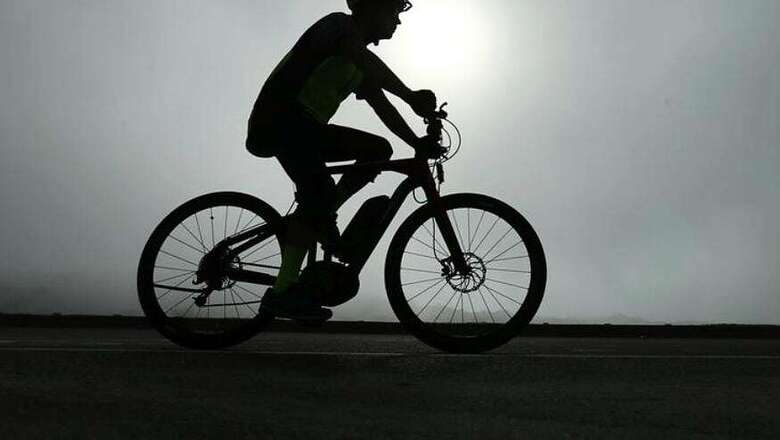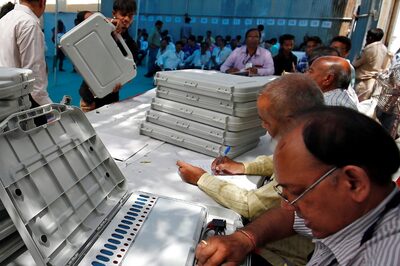
views
The COVID-19 pandemic is likely to have a tremendous impact on the way India moves in the days to come. As the society is expected to deal with this dreaded disease even after lockdown norms are eased, limiting contact between people and following safe distancing standards are going to become a reality for coming several months or maybe for years ahead. Considering that mobility forms a crucial part of our daily lives, staying away from transport systems cannot be an option which calls for a need to review the existing transportation scenario, and adapt it suitably.
The availability of efficient mobility systems is limited in the country, and that necessitates the need to plan and work out measures for providing a safe and secure mobility framework after the lockdown is lifted. The public transport systems are already bursting at the seams and so implementing social distancing norms in public transit modes are going to deprive many people of meeting their daily travel needs. The brunt of this will undoubtedly be borne by the vulnerable section of the society, most of whom have been hit the hardest by the lockdown. Another likely impact of COVID-19 will be on the usage and demand for private vehicles. With the occupancy of public transit systems curtailed in the post-lockdown months, many people are likely to shift to private modes of transport. The choice is likely to harm the environment, apart from increasing vehicular congestion. This calls for a need to think over and change the way how people travel in India by shifting towards a safer and sustainable form of mobility - walking and cycling. The transition towards a non-motorised form of transport and making them more inclusive will allow people to avoid overcrowded transit modes, and help maintain adequate social distancing. Cycling and walking also come with additional health benefits. These not only promote an active lifestyle but also improve the mental health and strengthen the immune system if done under the favourable circumstances.
The biggest hurdle in making the non-motorised forms of transport popular in the country is the lack of necessary infrastructure. Cities around the world have started expanding the cycle tracks and sidewalks to ensure that workers who are delivering essential services, and residents can stay healthy and active while maintaining social distancing amidst the coronavirus pandemic. While Bogota temporarily increased its cycle network by 100 km by turning city streets into cycle-ways, Mexico is also planning to expand its existing cycle network by four times. Such measures are being taken in several other countries around the world. Most of these cities have a lesser number of people cycling as compared to India but still, lie much ahead in terms of per capita ownership and usage of cycles. As per Census 2011 estimates, 111 million households own cycles in India and more than 26 million people commute to work by cycle in India while almost 45 million people walk to work. In a country where such a large share of the population depends on walking and cycling for their day to day activities, infrastructural provisions in terms of creating and saving the road space for them remain far too inadequate.
In the post-pandemic scenario, social distancing norms are going to reduce the passenger-carrying capacity of public transit systems as the overcrowding of these systems will pose a further risk of disease transmission. Some of the travel demand from formal sectors might reduce due to work from home provisions, but most of the jobs in both formal and informal sector are going to require people on-site. Hence, a significant surge is expected to happen in private vehicle ownership and usage. As a result, India, the hub of most polluted cities in the world, will again see the pollution levels shooting up. Knowing the impact that poor air quality has on India’s mortality rate, the need arises for cities to revive and rebuild the depilated and most of the time absent footpaths and cycle tracks and to invest more in creating new non-motorised transport infrastructure. It will not only help in curbing the pollution levels in the city but also promote a healthy lifestyle amongst people while reducing the burden on limited parking spaces.
Creation of non-motorised transport infrastructure based on a participatory infrastructure design would prove to be a first crucial step towards transforming Indian cities. To ensure that people make use of these spaces, efforts will be needed in terms of creating positive outlook among citizens about the associated benefits and supplementing these campaigns with schemes such as car-free days, cycle to work programs, bike share facilities, etc. The pandemic has already necessitated the need for redesigning our urban spaces and transport policies. The integration of walking and cycle tracks with other modes could be one of the key solutions for making our cities more efficient while ensuring the safety of its citizens.
Increasing investment and usage of cycling for short distances can also help in achieving massive economic savings. As per the study done by TERI last year, cycling for short distances can result in an annual benefit of INR 1.8 trillion to the Indian economy, which is equivalent to 1.6% of India’s annual GDP. The analysis also suggests that by cycling regularly for 120 days over a distance of 3.5 km can promote an active lifestyle and can avoid 4,756 premature deaths. It also has a potential of increasing personal fuel savings by INR 27 billion. Apart from the economic savings, the cycle has a potential of uplifting the status of people in rural India and other transit poor areas by increasing their access to education, health and employment.
Prioritising investment in non-motorised transport infrastructure will also reduce the burden of morbidity and mortality on already hard-hit strata of the society, the daily wage workers of India, who often travel in unsafe conditions due to economic constraints. Most of these users are also captive users of cycling and are more prone to pollution exposure and road accidents. Many of the essential service providers are also amongst these captive users. Hence, creating safe infrastructure and implementing rules for safeguarding their space could save millions of lives, and what better way than to start now and provide these lifeguards with their fair share of road space, security and safety.
Author is a Research Associate at TERI. All views are personal.
Also Watch:




















Comments
0 comment